Georgian Era Interior Design: The Georgian era had a span of more than a century and hence took in various influences from different designers and trends being followed during that time period.
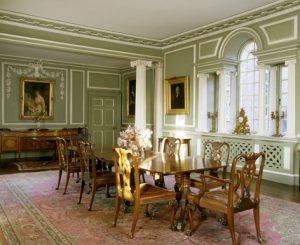
The Georgian style could be seen in architecture as well as Georgian Era Interior Design and decorative arts in Britain during the seventeenth and eighteenth centuries.
Georgian Style
Georgian style is usually associated with refined furniture, elegant clothes, classical music, buildings with illusory simplicity and country houses set in lovely parks. In fact, Georgian is not a style by itself, but it was an era in which many developments in architecture and Georgian Era Interior Design fields happened.
Because of the huge diversification and oscillation in the artistic style found in this era, it is perhaps more accurate to give it the name, Georgian style.
Early Georgian Style
When it comes to design and style, each architect or designer has his own individual approach. However, when talking about an era, you will find that all of them had something in common which became the trend of that era. They get driven by a same motivated idea and this helps create the antique classical world.
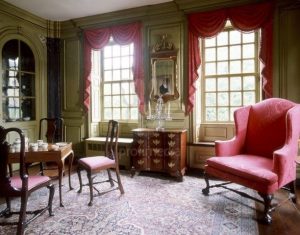
Georgian era is, in fact, defined as an era of distinguished neoclassical trends. But the early 50 years saw extravagant and monumental Baroque style in Europe which eventually was judged as questionable taste.
The Georgian style was greatly influenced by classicism. Another style that had a strong impact on the interior designs of the Georgian era is Palladianism which is based on the writings and works of Andreas Palladio. The credit for bringing the Georgian style to Britain in the 17th century goes to the famous English architect, Indigo Jones.
Palladianism was quite a significant factor in Georgian Era Interior Design. It was rich and graceful and included Roman temple facades and pillars. In addition to this, the proportion of the building was finalized using a mathematical formula.
Georgian Era Interior Design
The second Georgian architectural style that had great impact came into fashion during the mid 18th century. In addition to architecture and interior design, Georgian era saw remarkable achievements in decorative arts also.
Technical and aesthetic advancements were made in pottery, furniture designs incorporated a variety of distinct and memorable styles. Right from complicated curved pieces to straight simple lines of work, all could be seen inside the houses.
The house interiors were in harmonious proportions and included quiet colors, ornamentation and specifically designed furniture. The influence of the Industrial Revolution could be seen everywhere.
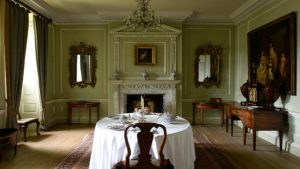
The increased mechanism and advancement in dying techniques resulted in more affordable and good-looking textiles. Varieties of designs were made available and eventually started to be used commonly.
Wallpapers were being mass-produced and started being more commonly used. The new-found wealth started to be used in bricks and mortar as well as to decorate houses from inside to outside of the building.
French influence could be felt in Regency style, that is later Georgian era. Decorative paint finishes, sophisticated wallpapers, and clouded ceilings were now in fashion. Fitted carpets started to be used commonly.
Georgian Furniture
In early Georgian era, furniture used to be heavily carved and gilded pieces on which upholstery made of velvet and damask was used. The royal style gradually extended to common houses and cabriole legs as well as claw feet chairs and baths created almost the feel of the throne.
Furniture was delicate and the fireplace took the central piece of attraction taking the place of the heart of the room. It was outfitted with cast iron as well as it had carved pillars and medallions with a lavish fire screen. It usually had a decorated front and fire screens. It followed the strict rules of proportion.
Georgian Color
Colors used during the Georgian era were pale and subtle like cream, sage, dusky rose, powder blue and pea green. Although in the early Georgian era dramatic colors like burgundy could be seen here and there, typically the colors used were muted pink, Wedgewood blue and so on.
In the houses of rich and wealthy, you could also find gold and murals as preferred wall coverings. Floral designs could also be found later on.
Georgian Interiors
Unlike other eras, the interior design during the Georgian era looked for harmony and balance. So, no cluttered or heavily embellished rooms could be found. Ceilings were high and the interior space was to be light and airy with light woodwork accents, a subdued color palette and delicate furniture as well as the décor.
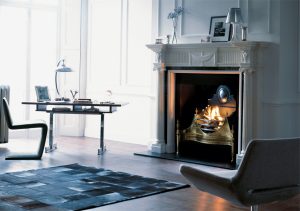
Furniture was usually simple wingback chairs and upholstered armchairs. Wall hangings and paintings were quite commonly seen. Chairs became further comfortable and stylish in later years of the Georgian era.
Late Georgian Style
Late Georgian style, more commonly known as Regency style recollected neoclassical elements but was also open to Egyptian, Greek, French and Asian influences. This style was much heavier in ornamentation as compared to the early Georgian era.
Interiors were more open and light. The windows became larger and building facades got covered with stucco plaster. The styles became a bridge between the Georgian era and the Victorian era.
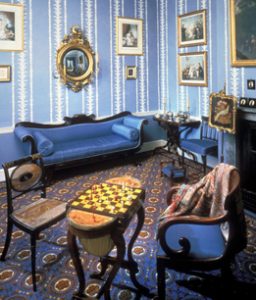
However, the Georgian era architecture left variations of styles and ideas. It left many masterpieces and the cities, as well as the urban quarters that were created during that time, are still models used for comfortable urban living.
Georgian homes were planned for leisure and the feeling of light and space was maximized. The Regency style that started replacing the popular trend in the late Georgian era was stylish and elegant.
More Info On- Georgian Literature, Furniture, Era Etiquette, Fashion